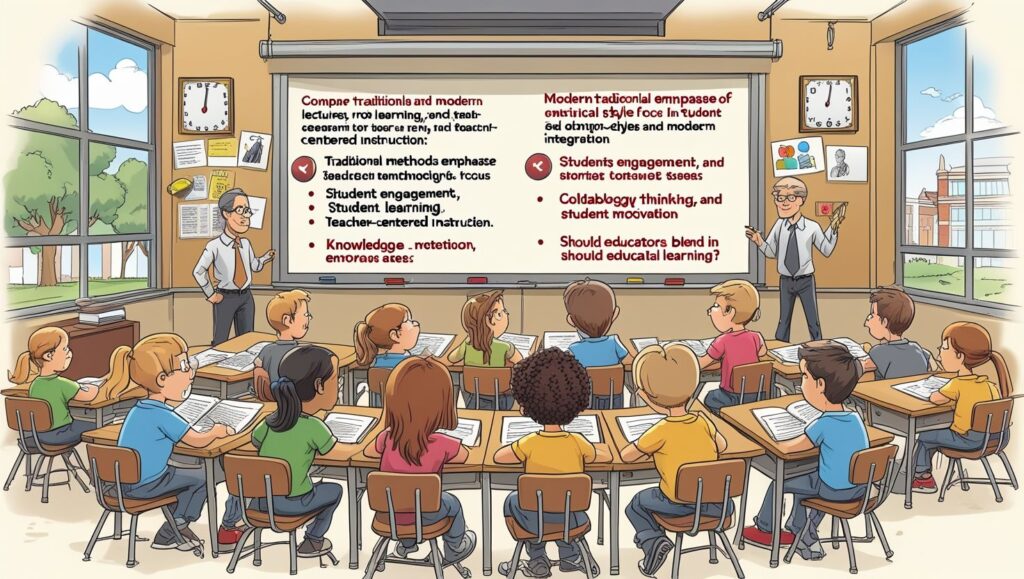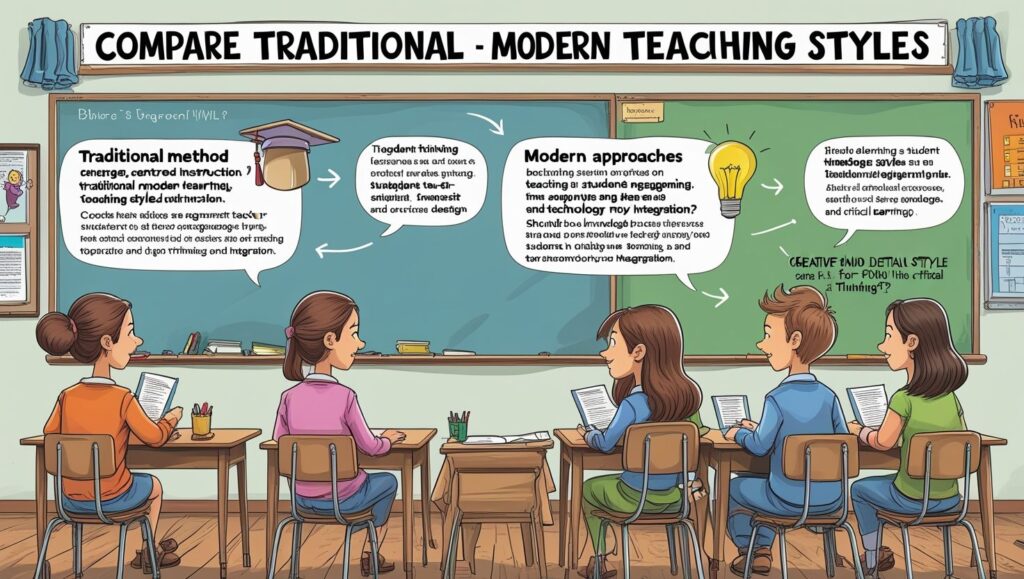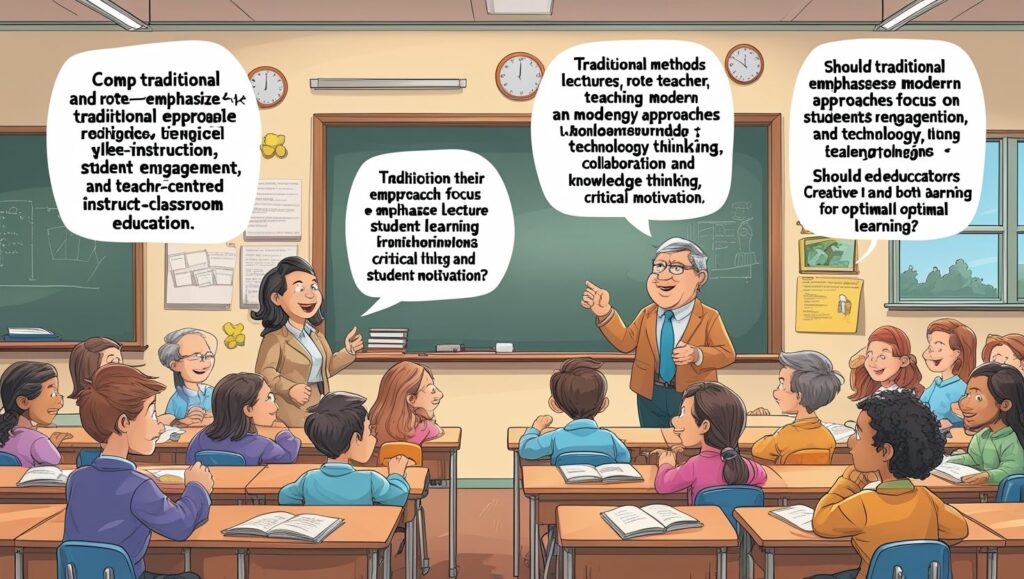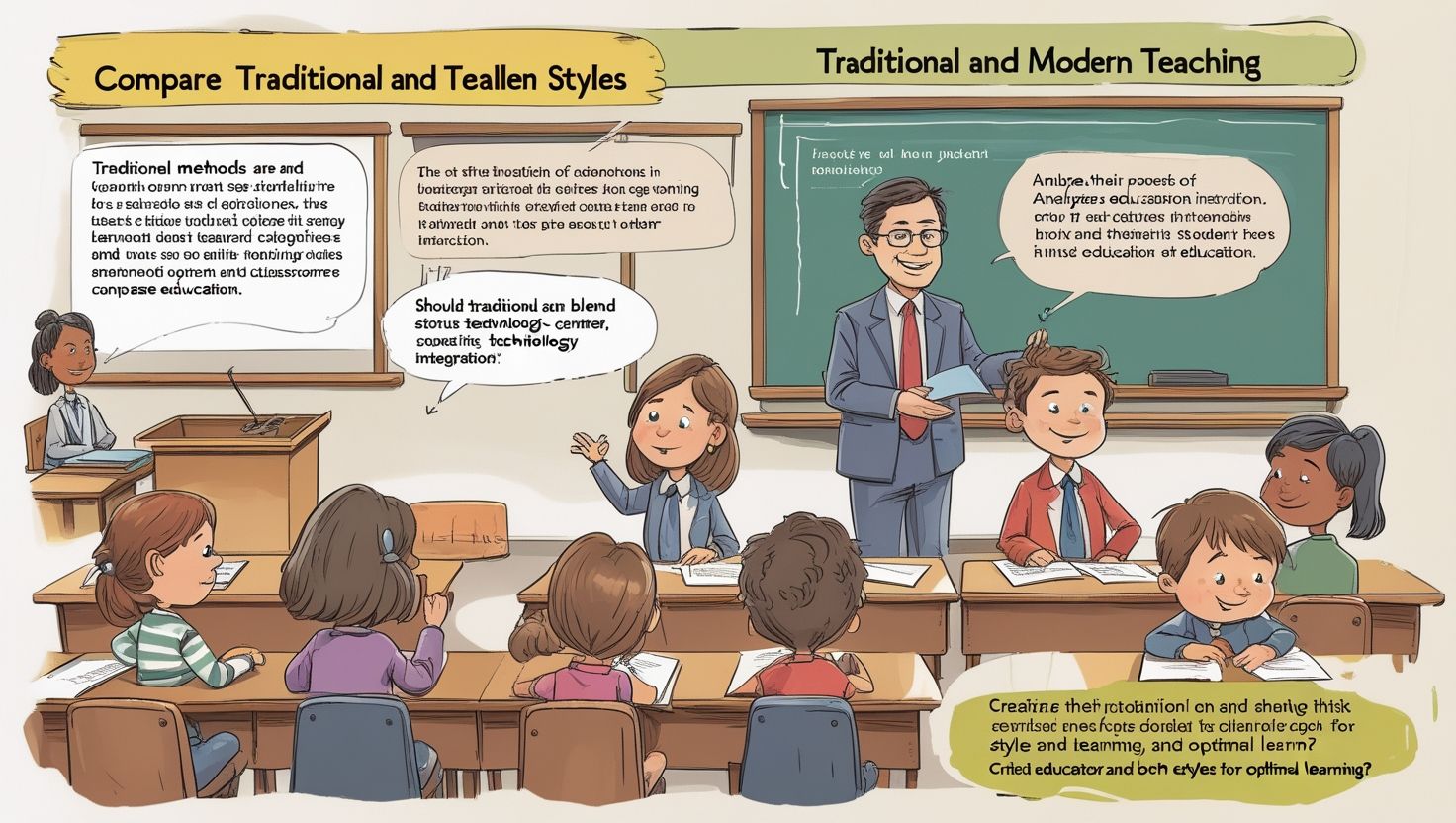Introduction:
Best Teaching Styles in Classroom Education, In any classroom, teaching style plays a crucial role. Not only does it shape how students engage, but it also determines how they retain knowledge. Clearly, every teacher brings their own flair. However, understanding the right style is vital for effective learning. With growing diversity in classrooms, one-size-fits-all no longer works. Therefore, adaptive teaching has become the need of the hour.
Furthermore, students come from different backgrounds and have varied learning preferences. As a result, teaching must accommodate visual, auditory, and kinesthetic learners alike. Additionally, a flexible approach boosts inclusivity and motivation. While some learners thrive on structure, others perform better in creative freedom. Thus, choosing the best teaching style requires thought.
Moreover, using appropriate strategies improves student outcomes. It not only enhances participation but also fosters a lifelong love of learning. Hence, teachers must be trained to assess and modify their approach continuously. In essence, the success of classroom education lies significantly in the style of delivery.
1. The Authority Style: Structured and Clear
The authority teaching style, also known as the lecture style, focuses heavily on control and structure. In this method, the teacher is the central figure. Primarily, information is delivered directly to students. For example, lessons are typically teacher-centered with minimal student interaction. This approach works especially well in higher education or content-heavy subjects.
In addition, the teacher sets clear rules and expectations. Consequently, discipline and order are maintained. Because lessons follow a fixed structure, students know what to expect. Furthermore, assessments are usually based on memorization or comprehension. This suits learners who are more passive or prefer guided learning.
However, despite its advantages, it may not cater to all learners. For instance, creative or kinesthetic students may struggle. Still, when used sparingly or combined with other methods, it adds value. Therefore, many educators use this style for introducing new concepts or giving lectures. Overall, it ensures clarity and consistency in delivery.

2. The Demonstrator Style: Showing and Doing
The demonstrator style, also known as the coach style, involves both explanation and demonstration. Not only does the teacher tell, but they also show. Often, this method includes visual aids, experiments, or step-by-step examples. As a result, learners observe and replicate tasks.
Moreover, this style bridges the gap between theory and practice. It is particularly useful in subjects like science, mathematics, or arts. Additionally, it supports visual and kinesthetic learners effectively. Instead of simply listening, students watch and do. Consequently, they engage more deeply with the material.
Furthermore, teachers act as role models. They demonstrate procedures and explain reasoning. Then, students apply their knowledge through practice. Hence, it fosters critical thinking and skill development. Despite its benefits, this method requires careful planning. Otherwise, it may lead to confusion or misinterpretation.
Still, the demonstrator style remains a strong tool. When combined with discussions or group activities, its impact multiplies. Therefore, many modern classrooms integrate this style into daily teaching routines.
3. The Facilitator Style: Guiding Independent Learning
The facilitator style emphasizes student-centered learning. Here, the teacher acts more as a guide than a lecturer. As such, learners take an active role in their education. Instead of passively receiving information, they explore and inquire. Consequently, this method promotes independence and curiosity.
Furthermore, students are encouraged to ask questions and seek answers. For instance, project-based learning and open-ended discussions are common. In addition, learners set goals, work in teams, and reflect on outcomes. Because of this, the classroom becomes a space for discovery.
Moreover, this approach builds essential life skills. These include problem-solving, time management, and collaboration. Although it demands more from students, the rewards are long-lasting. Also, it suits diverse learning styles, particularly auditory and kinesthetic learners.
Nevertheless, not all topics are fit for this method. Therefore, it should be balanced with direct instruction. Still, when used appropriately, it transforms learning. As students become co-creators of knowledge, motivation soars. Hence, many educators favor this empowering teaching style.
4. The Delegator Style: Promoting Responsibility
In the delegator style, students are given more control over their learning process. Instead of receiving instructions all the time, they manage their tasks. The teacher acts as a consultant, stepping in only when needed. As a result, this approach fosters autonomy and accountability.
Additionally, it encourages students to make choices. They may select topics, design projects, or work independently. Consequently, they take ownership of their education. While this method works best with mature learners, younger students can also benefit when guided properly.
Furthermore, group activities thrive under this style. Learners collaborate, research, and present findings. In doing so, they develop social and leadership skills. Importantly, the teacher supports in the background. By offering feedback and monitoring progress, they ensure learning stays on track.
However, the delegator style demands a high level of responsibility. Without discipline, students may lose focus. Hence, it requires consistent monitoring. Still, this approach prepares learners for real-world tasks. It teaches decision-making and self-management, making it a valuable classroom strategy.
5. The Hybrid Style: Balancing All Methods
The hybrid or blended teaching style combines elements from multiple approaches. Rather than sticking to one model, the teacher adapts based on student needs. For example, they may start with a lecture, follow with a demonstration, and end with group discussion.
Consequently, this style is flexible and inclusive. It allows educators to cater to different learning styles in one session. Furthermore, it promotes variety, which keeps students engaged. With each lesson structured differently, boredom rarely sets in.
Moreover, this method supports differentiated instruction. Teachers can tailor tasks for advanced, average, and struggling learners. In addition, technology often plays a role. Videos, apps, and interactive tools enhance delivery.
Despite its benefits, the hybrid style demands strong classroom management. Planning must be thorough. Otherwise, transitions between methods can become chaotic. Still, its advantages outweigh the challenges. Many successful teachers use this model to maintain balance. Ultimately, the hybrid style represents modern, adaptive education.

6. The Socratic Style: Encouraging Inquiry and Dialogue
The Socratic method involves deep questioning and dialogue. Instead of providing answers, teachers pose questions. In doing so, they stimulate critical thinking and analysis. Students are encouraged to challenge ideas and support arguments.
Furthermore, this style nurtures discussion-based learning. It is especially effective in humanities, philosophy, and literature. Through conversation, learners examine assumptions and reflect on concepts. Hence, they become more thoughtful and articulate.
Additionally, the Socratic style develops communication skills. Students learn to listen, respond, and reason. While this method may seem slow, its impact is profound. Learning becomes deeper and more meaningful.
However, it requires a safe, respectful classroom environment. Without trust, students may hesitate to share. Therefore, the teacher must foster open dialogue and tolerance. Though it may not suit all topics, it works wonders for abstract thinking. Overall, the Socratic style transforms classrooms into spaces of inquiry and growth.
7. The Inquiry-Based Style: Fostering Exploration
Inquiry-based learning revolves around asking questions and seeking answers. Teachers present a problem or topic. Then, students investigate using various resources. This approach transforms learners into researchers.
Moreover, it promotes curiosity and engagement. Instead of being fed facts, students uncover them. They formulate hypotheses, gather data, and draw conclusions. As a result, they learn how to think, not just what to think.
Furthermore, it suits STEM subjects, especially science and geography. Fieldwork, experiments, and case studies are common tools. In addition, technology plays a significant role. Online searches, digital presentations, and simulations enhance the experience.
Despite being time-consuming, the outcomes are rewarding. Students develop a sense of agency. They also build research and analytical skills. Still, the teacher’s role remains critical. While students lead the inquiry, teachers offer guidance and support. Hence, inquiry-based learning encourages lifelong curiosity and self-directed learning.
8. The Reflective Teaching Style: Continuous Improvement
Reflective teaching focuses on constant self-evaluation. Here, teachers analyze their lessons and assess what works or not. By reflecting on student feedback and learning outcomes, they refine their approach.
Moreover, this method enhances professional growth. Educators identify gaps, adjust techniques, and try new strategies. Additionally, it promotes empathy. Teachers see learning from the student’s perspective. Consequently, they build stronger connections.
Furthermore, reflective practice encourages innovation. Teachers stay updated and experiment with new tools. Also, it helps manage classroom challenges. Through reflection, educators find solutions to behavioral or academic issues.
However, this style demands time and openness. Teachers must be willing to accept criticism and learn. Peer observation, journaling, and student surveys are useful tools. Overall, reflective teaching leads to more responsive and effective classrooms. It fosters a culture of continuous improvement.

9. The Flipped Classroom Style: Reversing the Roles
The flipped classroom model reverses traditional teaching. Instead of learning new content in class, students review it at home. Then, classroom time is used for discussion, practice, and collaboration.
Typically, teachers assign videos, readings, or online lessons. Students study these independently. Later, they engage in problem-solving or projects during class. Consequently, learning becomes more active and personalized.
Moreover, this method supports varied learning speeds. Faster learners can move ahead, while others can review materials as needed. It also encourages parents to participate in their child’s learning.
However, it depends heavily on technology. Not all students have equal access. Hence, teachers must ensure equity. Still, when implemented well, the flipped classroom boosts engagement and understanding. It transforms passive learners into active thinkers.
Choosing the Right Teaching Style
10. Conclusion:
Teaching is not a one-style-fits-all profession. Therefore, the best approach varies with students, subjects, and situations. From structured authority to free-flowing inquiry, every style has its place.
Additionally, blending styles often yields the best results. A hybrid approach ensures variety, inclusivity, and adaptability. Moreover, reflective practices help teachers evolve. Continuous learning and feedback refine their methods.
Ultimately, the goal is to create a learning environment where all students thrive. Teachers must remain flexible, compassionate, and informed. In doing so, they unlock each child’s potential. Therefore, the best teaching style is one that meets learners where they are—and takes them where they need to go.

I found your blog website on google and examine a number of of your early posts. Continue to maintain up the very good operate. I just additional up your RSS feed to my MSN News Reader. Looking for ahead to studying extra from you afterward!…
27lu5w
I do agree with all of the ideas you’ve presented in your post. They’re very convincing and will definitely work. Still, the posts are too short for newbies. Could you please extend them a little from next time? Thanks for the post.
I’m impressed, I have to say. Actually hardly ever do I encounter a weblog that’s each educative and entertaining, and let me let you know, you will have hit the nail on the head. Your thought is excellent; the issue is something that not sufficient individuals are speaking intelligently about. I am very blissful that I stumbled across this in my seek for one thing relating to this.